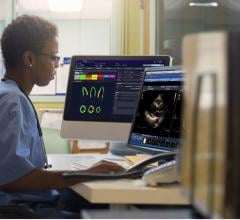
Andrea Russo, director of cardiac electrophysiology and arrhythmia services at Cooper University Hospital, advocated for an EP system that integrated EP data and the EMR. She found it in McKesson Cardiology.
As a member of the Heart Rhythm Society, Andrea Russo, M.D., had grown accustomed to searching in vain for a cutting-edge solution to solve the traditional business issues associated with electrophysiology (EP) — silos of information; manual, paper-intensive processes; inaccurate and outdated patient data; and lengthy turnaround times for reports to reach referring physicians.
“Every time we looked at what solutions were available in the market, we came away disappointed because none of the vendors had well-developed EP systems,” explains Russo, director of cardiac electrophysiology and arrhythmia services at Cooper University Hospital in Camden, N.J., and professor of medicine at Cooper Medical School of Rowan University. “We needed a system that could integrate the electronic health record (EHR) with the equipment in the EP laboratory to have access to all data in one location, avoiding redundancy and duplication.”
Russo said Cooper University Hospital had a homegrown EP reporting system in place that created several challenges, including: no integration to billing, no appropriate sign-off, no automated way to get reports to referring physicians and no integration to the NCDR ICD Registry.
“We had a variety of sign-ons and data residing at multiple locations, which made it difficult to access various components of the patient’s medical record and, therefore, more difficult to take care of patients,” she explains.
Jeff Paschell, integration manager for cardiovascular services at Cooper University Hospital, felt that there were too many silos of information.
“Physicians could not cross-reference against other patient information because EP has historically used different databases for the pre-procedure, intra-procedure, physician reporting and registry reporting,” he says.
“As a result, physician adoption, physician satisfaction and report turnaround time (TAT) were not where we wanted them to be,” Paschell admits. “We needed to seamlessly bring the modalities together and provide a more holistic view of the patient.”
A Light at the End of the Tunnel
In late 2011, Paschell was approached by one of Cooper University Hospital’s IT vendors to serve as a beta site for an EP solution. The McKesson Cardiology Electrophysiology solution was coming to market, and the hospital system had a long and successful history with McKesson.
“When we conducted our evaluation of cardiology solutions in 2009, McKesson was the closest to having a complete cardiovascular information system (CVIS) and won our business,” says Paschell. “When they came out with the EP module, it was a natural next step to sign on as the development partner.”
Due to the complexity of EP reporting, participation in the development process was important to the Cooper electrophysiologists. As Russo states, “because there were few well-developed EP reporting systems, we knew it was crucial to have input upfront, particularly related to system customization.”
But beta projects are, by their very nature, experiments that involve a significant labor investment. As the go-live approached, Paschell admits to having second thoughts. That was before McKesson’s team arrived on site. “My expectations were exceeded, and I remain impressed with the expertise and number of resources assigned to the project,” Paschell says. “A week after go-live, I couldn’t have been more thrilled at how smoothly the implementation went.”
Workflow Improvements Make EP Fast and Easy
Here’s how Cooper University Hospital is using the EP module. A patient comes in for a procedure in the inpatient setting. Before the patient enters the lab, a physician assistant places an order for the procedure and, for implantable cardioverter defibrillator (ICD) implantation procedures, enters patient data into the McKesson report, which has a direct linkage to the ICD registry. The data is entered only once into the system and simultaneously updates the EMR. According to Russo, the ability to have the information in the ICD registry is a key factor for Cooper University Hospital to meet regulatory requirements. She adds that the new process significantly improves workflow for nurses.
“Previously, we had a paper process where nurses would handwrite data on paper and then manually enter it into the system,” Russo says. “Now we have eliminated the paper mess and redundancy. We have automated vital signs acquisition, and the EP data is entered directly into the McKesson system to ensure accuracy.”
Nurses are not the only ones favorably impressed by the new system. EP physicians, referring physicians and even fellows report that the workflow is greatly improved, saving time, increasing efficiency and improving accuracy.
“The McKesson system is an incredible time saver,” Russo says. “At the end of the procedure, I leave the lab, sign off in the control room, and the report is already in the EMR and faxed to the referring physician before the patient is off the table. Instead of weeks, TAT is five minutes.”
Russo says access to the latest data goes beyond improving communication to referring physicians. “The system improves communication and, therefore, it is better for patient care.”
The final piece of the puzzle ties the procedure data into the billing systems. Charge codes are automatically assigned based on the information input during the procedures. These charges are then passed to a coder who can review them side by side with the procedure documentation. Once any adjustments are made, the coder submits the charges that are automatically interfaced to the billing systems.
Now using a system specifically designed for EP labs, Cooper University Hospital says it has what it needs: a better way to streamline its workflow, simplify ICD Registry submission and create better outcomes for its patients. By working with McKesson, Cooper University Hospital was able to help mold a solution that not only does these things but also integrates seamlessly into the same CVIS used for other cardiac procedures throughout the facility.
This case study was supplied by McKesson.
For More Information: www.allaboutcvis.com



 May 15, 2024
May 15, 2024 








